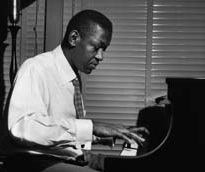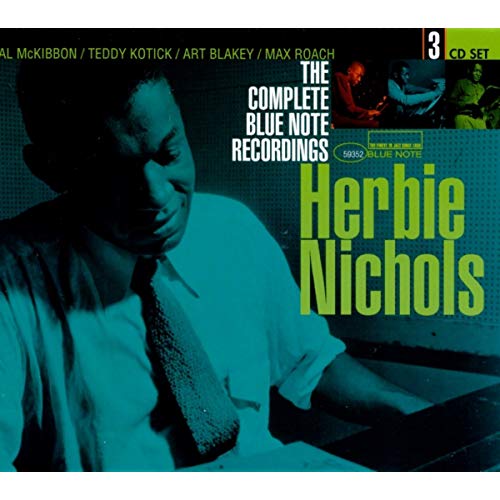Trio – Herbie Nichols
A charming uptempo song with some unexpected rhythmic and harmonic complications. Piano melody transcriptions are available for both the master and alternate takes.
- Recording: Herbie Nichols - Complete Blue Note Recordings of Herbie Nichols
- Recorded on: April 19, 1956
- Label: Mosaic (MR5-118)
- Concert Key: F
- Vocal Range: , to
- Style: Swing (uptempo)
- Piano - Herbie Nichols
- Bass - Teddy Kotick
- Drums - Max Roach
Purchase Trio - Herbie Nichols
Purchasing this song through our affiliate links with certain retailers provides jazzleadsheets.com with additional support to help keep us bringing you the best lead sheets available. Thank you!
Video
- Celebrating pianist/composer Herbie Nichols' 100th birthday, Frank Kimbrough and the Jazz Composers Collective performed a night of Herbie's music at The Stone, a NYC night club. Enjoy their version of Herbie's TRIO. Frank Kimbrough - piano; Ron Horton - trumpet; Michael Blake - tenor saxophone; Ben Allison - bass; Michael Sarin - drums. January 2, 2019.
- Description
- Historical Notes
- Solos
- Piano Corner
- Bass Corner
- Drum Corner
- Guitar Corner
- Inside & Beyond
- Minus You
In the second A section the last measure is back in 4/4, with only one chord (F) and a melodic pickup to the bridge. Though the bridge's melody is mostly longer notes and simpler rhythms than the A section, the chords are more unusual—augmented triads descending in half steps, leading to D♭m in the fifth measure (with a 16th-note run pickup in the melody) and an unexpected descent back to the tonic.
The C section is extended to 10 measures of 4/4: the same motif from the first A section's final 6/4 measure is extended over the barline, with the E♭ chord on the downbeat of the 9th measure followed by a brief cadence back to the tonic.
As with most other songs from Herbie Nichols' Blue Note recordings, there is an intro/coda based on the end of the melody. The last four beats of the first A section's final 6/4 measure appear as the second measure of a four-measure phrase based on contrary motion: the general melodic direction ascends as the changes mostly descend, concluding with an open-ended D7♯5(♯9). As an intro, this phrase is played once followed by four measures of drums; the coda lacks any drum breaks and simply has this phrase twice, ending the second time on D♭7♭5. It's one of the few songs from these sessions that doesn't end with solo drums.
Articulation is very important in this song, especially the eighth-note line in the second and third measures which implies a dotted quarter-note hemiola. Our lead sheets show all the important articulations. Piano melody transcriptions are available for both the master and alternate takes; click on the Piano Corner tab for more details.
Herbie Nichols often gave his songs multiple titles; the alternate title for Trio is Treadmill, possibly referring to its looped III-VI7-II-V7 changes. The master takes of this song and Riff Primitif were first released on the Japanese Blue Note compilation "The Other Side Of The 1500 Series" (which also includes Kenny Dorham's Echo Of Spring), before appearing on the Mosaic box set that united Nichols' complete Blue Note recordings.
Frank Kimbrough's The Herbie Nichols Project included Trio on their 1996 debut album; it's also been recorded on another album of Nichols songs by Los Angeles saxophonist Marty Krystall, in 1999.
Related Songs
Email Send Trio to a friend

Herbie Nichols
January 3, 1919 – April 12, 1963
Don Sickler "On January 3, 2019, we were at the Van Gelder Recording Studio celebrating Herbie's 100th birthday with his family and pianists Frank Kimbrough and Glenn Zaleski. Both Frank and Glenn each recorded a previously unrecorded Herbie Nichols composition, on the same piano Herbie played for his Blue Note sessions. These were the initial recordings that started my new project, the Herbie Nichols Centennial Project, which debuts January 3, 2024. Read more...



